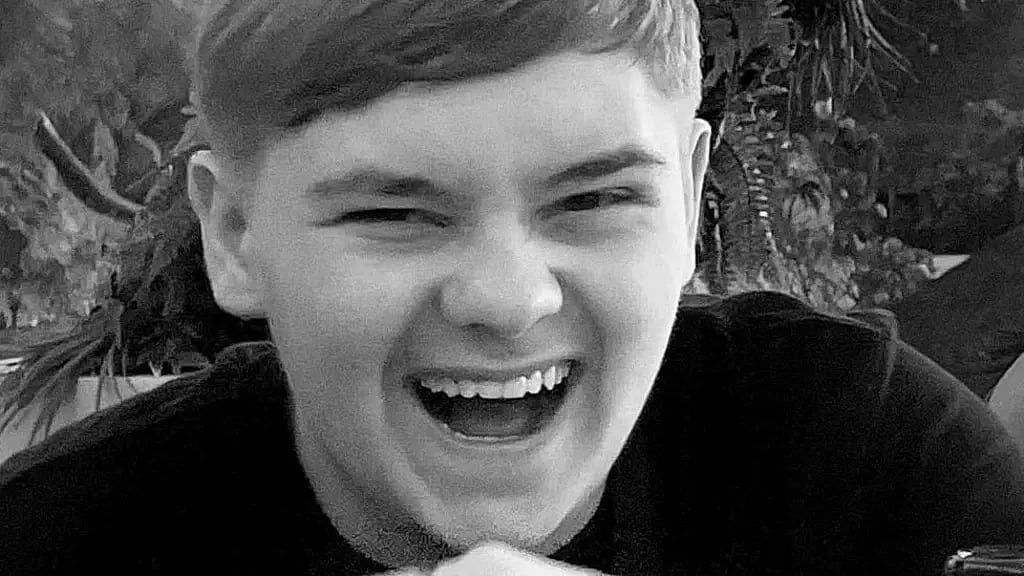Boy, 15, who murdered British teenager Harvey Willgoose sentenced to life with minimum term of 16 years
On February 3, Harvey was fatally stabbed during the school lunch break with a knife

Dubai: A 15-year-old schoolboy has been sentenced to life imprisonment with a minimum term of 16 years for the murder of his classmate, Harvey Willgoose, in a case widely reported by the BBC and Sky News that has shocked the nation and reignited urgent concerns over rising knife crime in schools.
Mohammed Umar Khan fatally stabbed Harvey during a lunch break at their Sheffield secondary school, and the judge’s decision to lift his anonymity has raised crucial legal and social questions. Here’s everything you need to know about the complex crime:
Who was the victim?
Harvey Willgoose was a 15-year-old student at All Saints Catholic High School in Sheffield. He was described by his family as kind, loving, and deeply cherished. On 3 February, he was fatally stabbed during the school lunch break.
Who killed him?
The perpetrator was also a 15-year-old student at the same school, identified as Mohammed Umar Khan. His identity was initially protected under UK law due to his age, but the judge lifted the anonymity order because of significant public interest.
Why was his name allowed to be made public?
Judge Mrs Justice Ellenbogen ruled that the issue of knife crime among young people is of major public concern. She said the “circumstances of this case are of substantial public interest,” justifying the lifting of Khan’s anonymity despite his youth.
What led to the fatal attack?
According to evidence heard in court, Harvey and Khan had a confrontation earlier that day—referred to as having “beef” and having “squared up.” CCTV showed Khan pushing Harvey in a corridor and later brandishing the knife in the school cafeteria before carrying out the attack.
Did he plan the attack?
The defence argued that the stabbing was not premeditated and that the accused acted in the heat of the moment after feeling threatened. However, the prosecution said there was no real evidence that Harvey posed any imminent danger and that Khan’s actions were deliberate and retaliatory.
Was this the first time the accused had carried a weapon to school?
No. The court heard that Khan had a history of bringing knives into school. His mother had previously discovered an axe in his school bag. Witnesses testified that Khan often behaved as if he was armed.
What did Khan say after the stabbing?
While waiting for police to arrive, he reportedly said: “I'm not right in the head, my mum doesn't look after me right.” His defence argued he had suffered emotional distress and bullying from other students, though not from Harvey himself.
How did Harvey’s family respond in court?
Harvey’s sister Sophie delivered a moving statement, saying: “This was not just a crime against Harvey, this was a crime against all who loved him.” She described the killing as “cruel and inhumane” and revealed that their grandfather, who attended the trial seeking justice, died just a week before sentencing.
What was said in his defence during sentencing?
Khan’s barrister conceded the “tragic, senseless loss of a young innocent life,” and acknowledged that while Khan had suffered humiliation, “it is nothing compared to what Harvey’s family will be experiencing.” The defence claimed Khan acted out of fear, not intent to kill.
What was the prosecution’s position?
The prosecution argued Khan acted in anger and intended to cause serious harm. They highlighted the number of stab wounds and said Khan had opportunities to walk away but instead chose to escalate violence.
What happens next?
The judge is expected to issue a sentence reflecting the gravity of the murder and Khan’s age. Regardless of the minimum term set, the sentence will likely include a significant custodial period.
Why is this case significant nationally?
This case has reignited debate over rising knife crime in UK schools, the responsibility of educational institutions to keep students safe, and whether youth offenders in such serious crimes should retain anonymity.
Network Links
GN StoreDownload our app
© Al Nisr Publishing LLC 2025. All rights reserved.